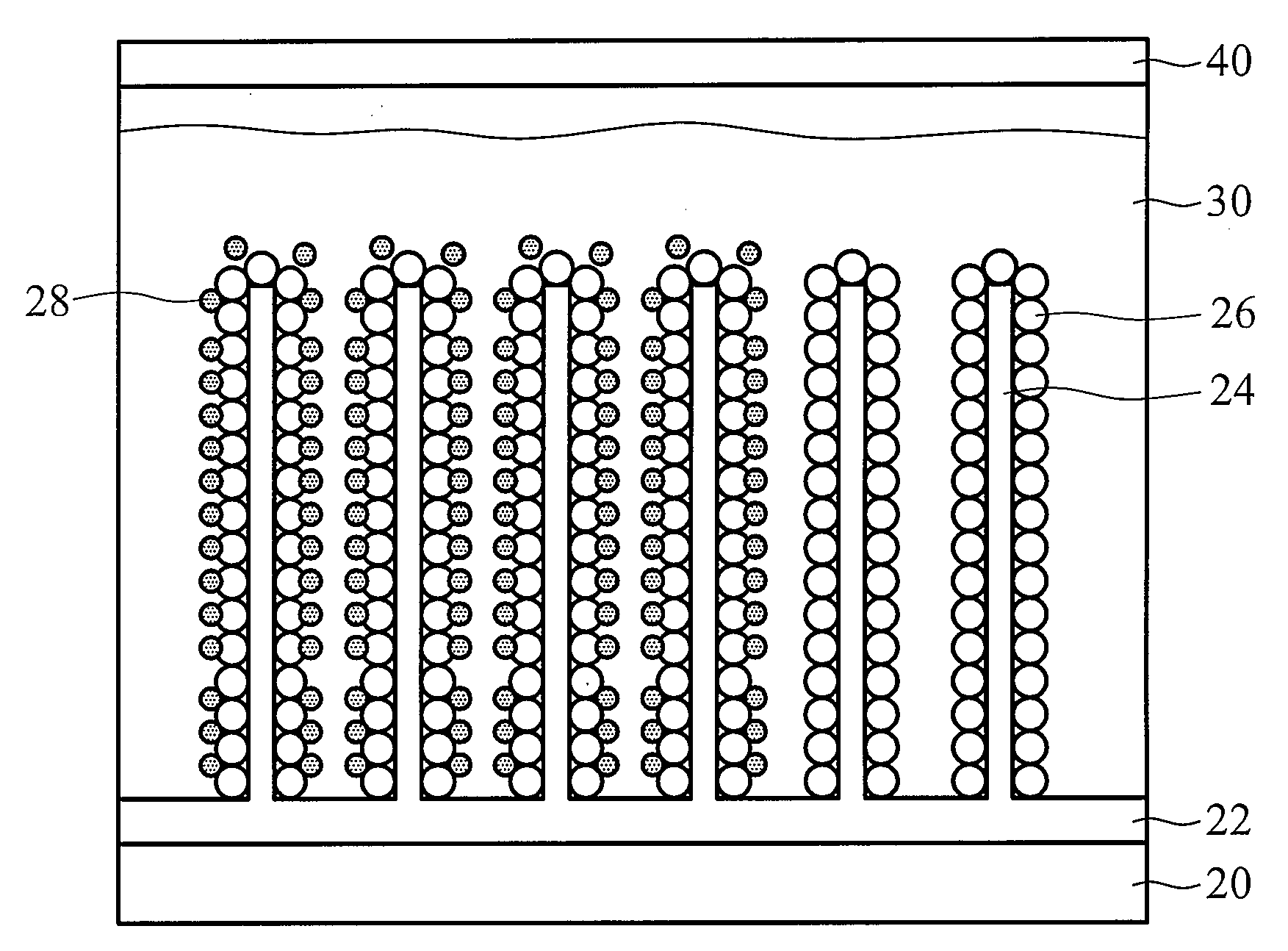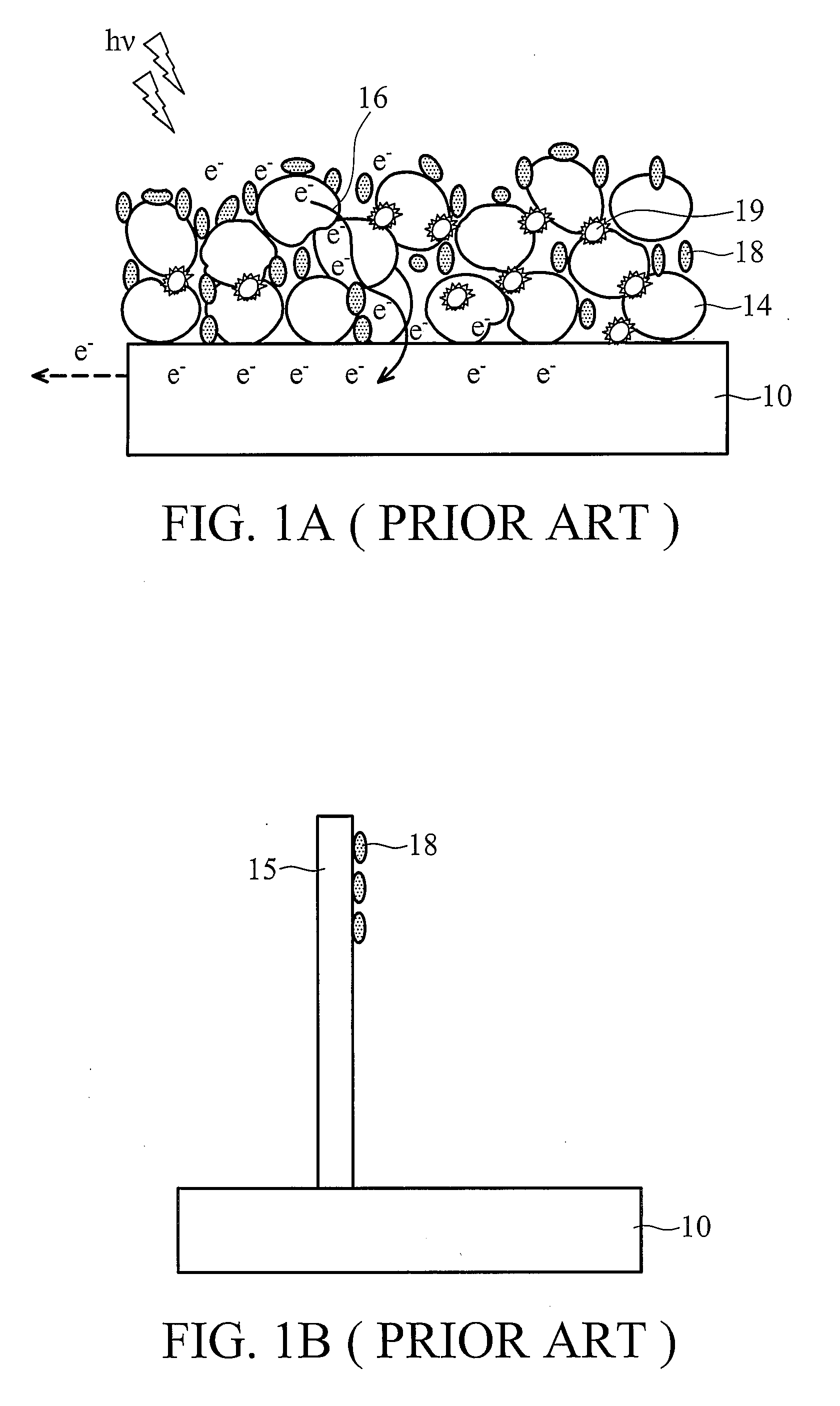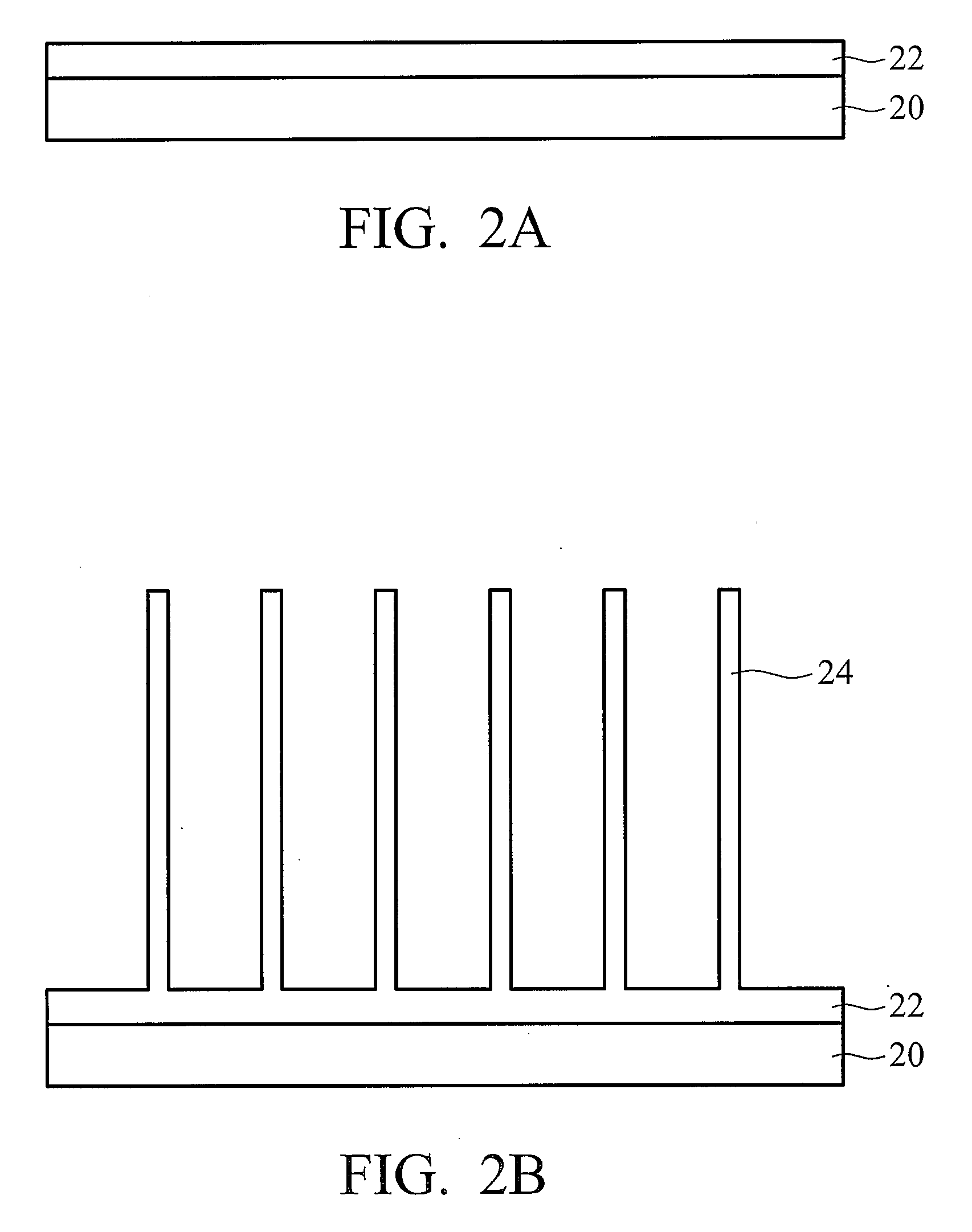Dye-sensitized solar cells and method for fabricating same
a solar cell and dye-sensitized technology, applied in the direction of electrical equipment, semiconductor devices, capacitors, etc., can solve the problems of low or non-polluting power sources, the cell efficiency of dye-sensitized solar cells is not effectively promoted, etc., to achieve the effect of promoting the cell efficiency of dye-sensitized solar cells, and reducing the number of side effects
- Summary
- Abstract
- Description
- Claims
- Application Information
AI Technical Summary
Benefits of technology
Problems solved by technology
Method used
Image
Examples
Embodiment Construction
[0017]The following description is of the best-contemplated mode of carrying out the invention. This description is made for the purpose of illustrating the general principles of the invention and should not be taken in a limiting sense. The scope of the invention is best determined by reference to the appended claims.
[0018]Referring to FIG. 2A, a first substrate 20 is provided. The first substrate 20 may comprises any suitable material. For example the material may be rigid, flexible, transparent, semitransparent, metal or semiconductor comprising silicon or gallium arsenide. Preferably, the first substrate 20 may be glass or polymer comprising plastic.
[0019]In FIG. 2A, a conductive layer 22 is formed on the first substrate 20 to provide a path for electron flow. As shown in FIG. 2B, a nanowire 24 is formed over the first substrate 20 to increase a contact surface conductive layer 22 and subsequent dye. The nanowire 24 may also be referred to as a nanorod. Preferably, the nanowire2...
PUM
 Login to View More
Login to View More Abstract
Description
Claims
Application Information
 Login to View More
Login to View More - R&D
- Intellectual Property
- Life Sciences
- Materials
- Tech Scout
- Unparalleled Data Quality
- Higher Quality Content
- 60% Fewer Hallucinations
Browse by: Latest US Patents, China's latest patents, Technical Efficacy Thesaurus, Application Domain, Technology Topic, Popular Technical Reports.
© 2025 PatSnap. All rights reserved.Legal|Privacy policy|Modern Slavery Act Transparency Statement|Sitemap|About US| Contact US: help@patsnap.com



